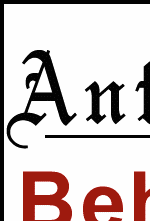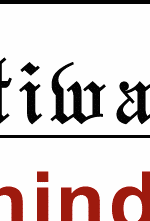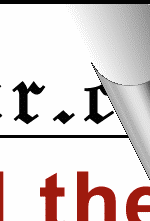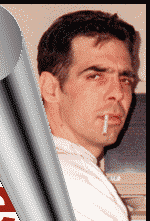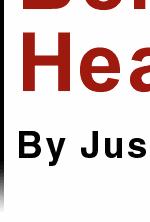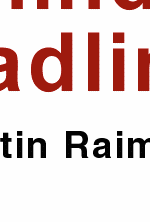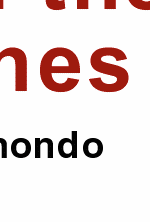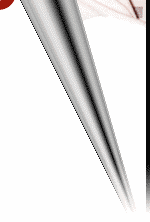THE
BIRTH OF A GENRE
What
is truly astonishing is the sheer volume of literature that
this controversy has generated: what we are seeing is the
creation of a whole new literary genre, the Pat Smear, which
seems to be taking the punditocracy by storm. As the genre
has grown, with new works being published every day –
indeed, it often seems like every hour – the phenomenon
has evolved into something more complex. Sub-genres have appeared,
variations on the basic theme of Pat as the reincarnation
of Hitler, as the Art of Smearing Pat becomes more sophisticated
and reaches new heights – or is that depths?
THE
NEW YORK POST AND THE ART OF SMEARING
My
least favorite is the Basic Pat Smear, exemplified by the
frothy-mouthed raving of the New York Post. In style
and content, the rantings of editorial chieftain John Podhoretz
and his crew resemble nothing so much as PM, published
by Marshall Fields in the 1930s, the long-defunct left-wing
New York City newspaper which spent much newsprint attacking
isolationists – and, not coincidentally, extolling the
virtues of the Soviet Union. With Murdoch's deep pockets,
however – considerably deeper than Fields' – the
Post is unfortunately unlikely to meet a similarly
deserved fate anytime in the near future. At any rate, PM's
method was simple: link the America Firsters to Nazism in
the crudest terms imaginable, by simple repetition.
Tearing a leaf from the book of Nazi propaganda as written
by Goebbels and Julius Streicher, the idea was to keep repeating
a theme so crudely and relentlessly that it becomes accepted
as "fact" by default. The Post employs this
method expertly, and as example of the Basic Pat Smear we
have a veritable masterpiece in the
vitriolic Andrea Peyser, who opines:
"Patrick
Buchanan is a Ku Klux Klansman who masks his identity behind
a smile and a wink instead of a hood. He is an urbane Khalid
Muhammad, David Duke with a pedigree. Lately, we've hollered
until we're hoarse over the handful of crazies who've managed
to grab the microphone in our midst. In the meantime, Buchanan
– a racist who scapegoats Jews for leading America down
a path of destruction – has been skulking in the daylight
of America's mainstream."
WHADDAYA
EXPECT?
After
wiping the spittle off your face, look at the above paragraph
and see how the Basic Pat Smear operates. First rule: never
offer any proof for your basic thesis. It is a given
that Pat is evil incarnate, and any attempt to justify or
offer even a shred of evidence will only hold you back from
your main objective: to smear. Besides, whom are you trying
to impress? Do you think a bunch of college professors
are reading a newspaper that is two-fifths gossip, two-fifths
sports, with the rest divvied up between ads and propaganda?
BLINDED
BY HATE
What
is really amazing about this particular article, aside from
the fact that it manages to use up the entire repertoire of
epithets beloved by the Smear Pat Brigade, is its obliviousness
to reality. Blinded by her hate for Pat, her mind clouded
by her own vitriol, Ms. Peyser reveals an astonishing fact,
quoting Anti-Defamation League official Abe Foxman as saying:
"Pat
Buchanan is personally responsible for my being appointed
to the United States Holocaust Museum Council. What makes
him even more dangerous is that he's – quote, unquote
– 'a nice guy.' Some of his best friends are Jews."
THAT'S
GRATITUDE FOR YOU
As
an example of how deluded some in the Smear Pat Brigade can
get, we are being asked to believe that Buchanan personally
intervening on behalf of Foxman – when he was being blackballed
because he is a Democrat – is evidence of . . . anti-Semitism!
But how on earth can this be? Where oh where
is the logic in it? And how about that for gratitude?!
Abe, you oughtta hang your head in shame.
YOU
JUST CAN'T WIN
According
to Foxman and Peyser, Abe got his dander up over Pat's opposition
to the Gulf War, and wrote him a note about it. "He writes
back, 'C'mon, Abe, don't defend Congress. You know what it's
like!'" "He's a nice guy," says Honest Abe,
but this, too, is not good, according to Peyser and
Foxman. For it masks his inner evil. Buchanan, in their eyes,
is guilty of the one sin which cannot be forgiven: he won't
apologize for identifying foreign lobbyists as the spearhead
of the effort to drag us into war with Iraq – and exposing
their continuing role as the advance guard of the War Party.
And so here's how it works: it doesn't matter what
you've done for Foxman in the past. This doesn't give you
any credit or accumulation of good will. What Abe wants to
know is, what can you do for me today – and if
you can't, or won't, then you're an anti-Semite.
ONLY
IN NEW YAWK
The
problem with the Post School of Pat Smearing, however,
is that it is a strictly regional phenomenon: after all, where
else, outside of New York City, would Foxman be considered
anything other than a complete ingrate? This leaves the field
wide open for various other schools of Pat Smearing, some
operating on a somewhat higher level: no less vicious, but
far more subtle. This is really such a vast topic, that I
could not possibly deal with it in a single column: the inventiveness
of the smear artists (some of the best and highest paid in
the business) knows no bounds. Today, however, we will examine
what is to me the most fascinating and exotic sub-genre of
Pat Smearing, the Smear by Historical Analogy School.
THE
COUGHLIN ANALOGY
Of
course, comparing Pat to Hitler is a really crude sort of
historical analogy. For all those college professors out there,
who are not so susceptible to suggestion as the masses, a
more sophisticated analogy is required; and so, instead of
Hitler, Buchanan is compared to lesser-known figures from
the same period, such as the Reverend Charles E. Coughlin.
Now, the Coughlin analogy is not really new: back in 1992,
Jacob Weisberg and the editorial writers at The New Republic
really brought the genre to its full development, with scores
of articles in which much was made of the alleged similarities
between Buchanan, the star of Crossfire, and Coughlin,
the "radio priest" of the 1930s. But the analogy
is revived each time Buchanan decides it's time to call out
his Brigades and "ride to the sound of the guns"
and consequently the genre is enjoying a revival. The basic
line was most recently trotted out by Mark F. Nolan, a columnist
for the Boston Globe, in "The Last Coughlinite"
[October 20, 1999], who wrote:
"The
pastor from Royal Oak, Mich., and the polemicist from McLean,
Va., derived their fame from the airwaves, not the voters.
Their charm and certitude masked a combativeness that soon
degenerated into venomous crankiness. Coughlin was ''the radio
priest,'' a star on CBS in its infancy. When Ted Turner was
building CNN, Buchanan was a glib content provider."
THE
EMPTY ANALOGY
And
so here is what Coughlin and Buchanan have in common: charm,
certitude, and access to a microphone. But so what? Is that
it? Notice how vague is the reader's introduction to
the Rev. Charles Coughlin. Like Buchanan, we are told, he
was "venomous." But how? Nolan cites the historian
David M. Kennedy as saying that Coughlin was a "demagogue"
who used radio to stand out from among "the legions of
radicals and demagogues and nostrum-mongers and just plain
crackpots who flourished in the heated atmosphere of the Depression."
This quote – the use of the word "radical"
– gives us just a small hint of what is wrong with this
line of argument – but how many are likely to follow
it up? The authors of these screeds are omnivorous when it
comes to plundering history for their political purposes.
The name of Coughlin is thrown in there, along with Hitler,
Franco, and David Duke, as just another epithet in the arsenal
of hate. But who was Coughlin, and what did he advocate?
A
RADICAL NEW DEALER
Charles
Coughlin first rose to public notice and political prominence
as a fanatically left-wing supporter of Franklin Delano Roosevelt.
He made long, fervent speeches, with titles like "Roosevelt
or Ruin!" and declared to his growing band of followers
that "The New Deal is Christ's Deal." Alan Brinkley,
in Voices
of Protest: Huey Long, Father Coughlin, and the Great Depression
(1982), notes that Coughlin gushed about "how inspiring"
it was "to sense the atmosphere in every member of the
[Roosevelt] Government from the head of the Cabinet down to
the lowliest officer!" He was in constant communication
with the White House in the early 1930s, making his last visit
there in 1936. While he denounced Communism, he was in effect
a socialist. The platform of Coughlin's organization, the
National Union for Social Justice, advocated "nationalizing
those public resources which by their very nature are too
important to be held in the control of private individuals"
and "the conscription of wealth as well as the conscription
of men" in wartime. In a slogan grown familiar over the
years on account of endless repetition by socialists, Coughlin
averred that "I believe in preferring the sanctity of
human rights to the sanctity of property rights." Add
to this a guaranteed annual income, a staunch defense of the
National Recovery Act, and vehement opposition to Prohibition,
and you have Coughlin's politics, which were unmistakably
left-wing and generally recognized as such at the time.
A
MAN OF THE LEFT
And
so here we come into the first big problem with the Coughlin/Buchanan
analogy, and that is that Coughlin came from the far Left
– from an explicitly anti-capitalist albeit entirely
homegrown left-wing populism. Coughlin broke with FDR, not
over the war, but because the President failed to enact the
economic revolution promised in his speeches. While praising
FDR for "driving the moneychangers out of the temple"
Coughlin was soon disappointed by the fact that, as he put
it, "somehow or other, the cards dealt by the New Deal
contained the same joker, the same hidden cards that were
found in the old deal." To "the disappointment of
millions," he averred, "Mr. Roosevelt's Administration
had salvaged private banking and set it upon its feet."
["Two Years of the New Deal," March 3, 1935.]
MONEY
CRANK
The
key to understanding Coughlin's thought is that he was, more
than anything, what is known as a money crank. The program
and literature of the National Union for Social Justice mentions
the need for a "government-owned central bank" as
the one key demand of the Coughlinites, and this was the subject
of countless sermons: It seemed to him that the Federal Reserve
System, a system of private banks, was "undemocratic":
what he proposed was that the Board be elected by the people,
with one representative from each state. Coughlin also called
for the remonetization of silver and, in effect, for an inflationary
policy, as had the Greenbacks and Populists before him. But
what has any of this got to do with Pat Buchanan, anyway?
The answer is: nothing.
GREENSPAN
OR GREENBACKS
Unlike Coughlin, Pat never
attacked private banking as oppressive per se, and,
last I heard, had yet to come out for the long-lost cause
of Free Silver. And while I am almost sure that Buchanan has
his own critique of the Federal Reserve, it is hard to imagine
him calling on Alan Greenspan to stand for election.
THE
"MONEYCHANGERS"
Motivated
by his obsessive focus on "the moneychangers," the
left-wing Coughlin became progressively less enamored of his
hero, FDR, and began to move in a new direction. Soon, he
was excoriating "the Warburgs and the Kuhn-Loebs"
– although always careful to throw in the occasional
reference to "the Morgans" as the secret manipulators
of the nation's misery. Just as, in Germany, many former members
of the Stalinized Communist Party became ardent Nazis, so
in the US a smaller number of leftists moved in the direction
of fascism and national socialism, including Dr. Francis E.
Townsend, author of the "Townsend Old Age Revolving Pension
Plan," a leftist nostrum of the day, and Senator Huey
Long, whose base in the Democratic Party for a while threatened
to overtake FDR's. While the ideologically leftist leaders,
such as Norman Thomas and the Farmer Labor Party hierarchy,
denounced both Coughlin and Long, as Alan Brinkley points
out they had a very hard time keeping their followers from
joining these "demagogues." Coughlin's demagoguery
was none too different from their own.
THE
NOLANIZATON OF HISTORY
Nolan,
the historical ignoramus, writes that "Coughlinism resonates
on every page of Buchanan's A
Republic, Not An Empire, a treatise that tries to
make isolationism not only respectable but mandatory. In his
distinctively argumentative prose, Pat reduces figures in
history to stick figures and hapless ideologues. Henry Clay,
welcome to Crossfire." Yet Nolan reduces Coughlin
to a stick figure, giving us almost no solid information except
that the radio priest was anti-Semitic and "isolationist."
But Coughlin's isolationism, as Alan Brinkley points out,
was less wedded to a principled opposition to internationalism
than it was, toward the end, by open admiration for Hitler's
Germany and "the corporate state" – in the
name of "social justice," of course. Coughlin was
a left-wing priest, who took seriously the anticapitalist
"liberation theology" of his day – Pope Leo
XIII's 1891 encyclical, Rerum Novarum, or On the
Condition of the Working Class – became a leading
and powerful supporter of the most left-wing President in
American history, and then began to move (with perfect consistency)
toward national socialism.
ANOTHER
TRADITION
On
the other hand, Buchanan comes from an entirely different
tradition, not the party of FDR but the party of Robert A.
Taft and Barry Goldwater (circa 1964). While Nolan is quick
to note that the Union Party platform warned against "entangling
alliances," the original authors of that particular bit
of advice were none other than the Founding Fathers. (The
national platforms of the two major parties also contained
similar language, and none were more isolationist than Roosevelt,
who pledged "again and again and again" that "I
will not take your boys into war.") Pat's legacy can
be traced back not to the obscure ramblings of the Radio Priest,
but to the prescient insights of the conservatives and "isolationists"
of yesteryear – the men and women of the Old Right, who
fought against Roosevelt and his wartime dictatorship. This
is the heritage we defend, and the Smear Brigade is determined
to undermine and destroy it with such devices as the Coughlin
Analogy. What the charlatan "historians" of Nolan's
caliber are depending on is the nearly universal ignorance
of most people on the rather abstruse subject of Father Coughlin.
But even the most casual student of the Radio Priest's life
and belief system soon discovers that, far from being similar,
Buchanan and Coughlin are in many ways opposites: for
"the corporate state" is indeed the antipode of
the decentralized, de-federalized America Pat Buchanan envisions.
A
SISYPHEAN TASK
But
anyone who is deceived into thinking for a moment that we
have exhausted our critique of the Smear by Historical Analogy
has grievously underestimated the productivity and ingenuity
of the Smear Brigade – these guys are nothing if not
prolific. Alas, the hour is late, and there is no time to
examine Geoffey Wheatcroft's screed, "America's Christian
Socialist," in the Wall Street Journal, another
major literary factory of Anti-Buchananiana. Wheatcroft's
smear technique is truly innovative, and takes the historical
analogist school of slander one step beyond the Father Coughlin
gambit in unearthing an even more obscure historical
figure – none other than Karl Lueger, "the mayor
of Vienna 100 years ago" who was "anticapitalist,
antiliberal, and anti-Semitic"! Good Lord! Is there to
be no end to this little game, in which the smear-mongers
cite ever more obscure figures out of their rogues gallery?
Is the task of exploding their lies never done?
WHY
THIS IS IMPORTANT – A REMINDER
Well,
then, why should anybody care? I have said it before and will
say it again: because this is a test case. The idea is that
anyone who is an "isolationist" (i.e. a non-interventionist)
is to be driven out of American politics, and, not only that,
but forever branded as an ideological outlaw, to be shunned,
demonized, and eventually silenced. Whatever disagreements
one may have with Buchanan, all advocates of a peaceful and
indeed a rational foreign policy must certainly agree that
this must not be allowed to happen. That is why I have spent
the last few columns on this subject. For all opponents of
war, for leftists, greens, pacifists, and independents, as
well as libertarians and conservative opponents of intervention,
the demonization of Buchanan means the exclusion of all
non-interventionists from the public debate over the foreign
policy of our nation. If Buchanan can be exiled to the fever
swamps, and relentlessly smeared for daring to question our
policy of global intervention, then who among us is safe?
The concerted attack on Buchanan is meant to close off the
possibility of any meaningful discussion on the most vital
issue of the day: it is meant to clear the decks for the next
war, and nip the opposition in the bud. And that cannot be
allowed to happen – not as long as Antiwar.com holds
high the banner of "isolationism" (i.e. peace) in
cyberspace.
HOROWITZ
THE HYPOCRITE
I cannot resist adding this little
item, found on Frontpage,
the cyber-journal of David Horowitz and his Center for the
Study of Popular Culture. Here is the Frontpage "Quote
of the Day" from yesterday;
"Members
and front organizations must continually embarrass, discredit,
and degrade our critics. When obstructionists become too irritating,
label them as fascist or Nazi or anti-Semitic. Constantly
associate those who oppose us with those names that already
have a bad smell. The association will, after enough repetition,
become 'fact' in the public mind."
~ Central Committee of the Communist Party, 1943, in an
instruction sent to Communists around the world. Quotation
courtesy of FrontPage reader Michael Koller."
This
is a great quote – it sounds like the instructions issued
by the High Command of the Smear Pat Brigade to their servitors
in the media. The irony is that Horowitz has himself been
the most dependable smearer of Buchanan on the Internet (yes,
even more so than Salon). Frontpage has run
practically every smear of Pat – including the
"Christian Socialist" article mentioned above and the Norman
Podhoretz piece debunked in my
last column – no matter how mindless and vicious
it may be. What is especially striking, here, is the unconsciousness
of the irony – Horowitz doesn't even realize how or why
this little gem of a quote underscores his own hypocrisy.
The good news is that plenty of his readers will not be so
oblivious. Hats off to Michael Koller for (perhaps inadvertently)
hoisting Horowitz on his own petard.
|
